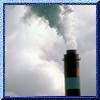| |
Releases which meet one of the exemptions listed below do not need to be reported under EPCRA.
- As long as all released EHSs and HSs meet an emergency release reporting exemption, no reporting of that release is required by EPCRA.
- Federally Permitted Release: 40 CFR 355.20, 355.40, CERCLA Sections 101(10) and (22), and CERCLA Section 103 (E). The term Federally Permitted Release means:
- discharges in compliance with a permit under section 402 or the Federal Water Pollution Control Act,
- discharges resulting from circumstances identified and reviewed and made part of the public record with respect to a permit issued or modified under section 402 of the Federal Water Pollution Control Act and subject to a condition of such permit,
- continuous or anticipated intermittent discharges from a point source, identified in a permit or permit application under section 402 of the Federal Water Pollution Control Act, which are caused by events occurring within the scope of relevant operating or treatment systems,
- discharges in compliance with a legally enforceable permit under section 404 of the Federal Water Pollution Control Act,
- releases in compliance with a legally enforceable final permit issued pursuant to section 3004 (a) through (d) of the Solid Waste Disposal Act from a hazardous waste treatment, storage, or disposal facility when such permit specifically identifies the hazardous substance and makes such substances subject to a standard of practice, control procedure or bioassay limitation or condition, or other control on the hazardous substances in such releases,
- any release in compliance with a legally enforceable permit issued under section 102 or section 103 of the Marine Protection, Research, and Sanctuaries Act of 1072,
- any injection of fluids authorized under Federal underground injection control programs or State programs submitted for Federal approval (and not disapproved by the Administrator of the Environmental Protection Agency) pursuant to part C of the Safe Drinking Water Act,
- any emission into the air subject to a permit or control regulation under section 111, section 112 Title I Part C, Title I Part D or State implementation plans submitted in accordance with section 110 of the Clean Air Act (and not disapproved by the Administrator or the Environmental Protection Agency), including any schedule or waiver granted, promulgated, or approved under these sections,
- any injection of fluids or other materials authorized under applicable State law (i) of the purpose of stimulating or treating wells for the production of crude oil, natural gas, or water, (ii) of the purpose of secondary tertiary, or other enhanced recovery of crude oil or natural gas or (iii) which are brought to the surface in conjunction with the production of crude oil or natural gas and which are reinjected,
- the introduction of any pollutant into a publicly owned treatment works when such pollutant is specified in and in compliance with applicable pretreatment standards of section 307 (b) or (c) of the Clean Water Act and enforceable requirements in a pretreatment program submitted by a State or municipality for Federal approval under section 402 of such Act, and (k) any release of source, special nuclear, or byproduct material, as those terms are defined in the Atomic Energy Act of 1954, in compliance with a legally enforceable license, permit, regulation, or order issued pursuant to the Atomic Energy Act of 1954.
- Continuous Releases: CERCLA Section 103(e)
Although continuous releases do not require emergency release notification under EPCRA, they do require an annual notification to the National Response Center. A continuous release must be stable in quantity and rate for a period sufficient to establish the continuity, quantity, and regularity of such release. Also, an emergency release notification must still be made any time there is a statistically significant increase in the quantity of any HS or constituent thereof released above that previously reported.
The definition of the term release excludes the following:
- any release which results in exposure to persons solely within a workplace, with respect to a claim which such persons may assert against the employer of such persons,
- emissions from the engine exhaust of a motor vehicle, rolling stock, aircraft, vessel, or pipeline pumping station engine,
- release of source, byproduct, or special nuclear material from a nuclear incident, as those terms are defined in the Atomic Energy Act of 1954, if such release is subject to requirements with respect to financial protection established by the Nuclear Regulatory Commission under section 179 of such Act, or, for the purposes of section 104 of this Title or any other response action, any release of source byproduct, or special nuclear material from any processing site designated under section 102 (a) or 302 (a) of the Uranium Mill Tailing Radiation Control Act of 1978, and
- the normal application of fertilizer.
Any specific questions concerning how these exemptions apply to releases at DOE facilities can be directed to EH-231 or the appropriate EH-22 compliance coordinator.
|
|

